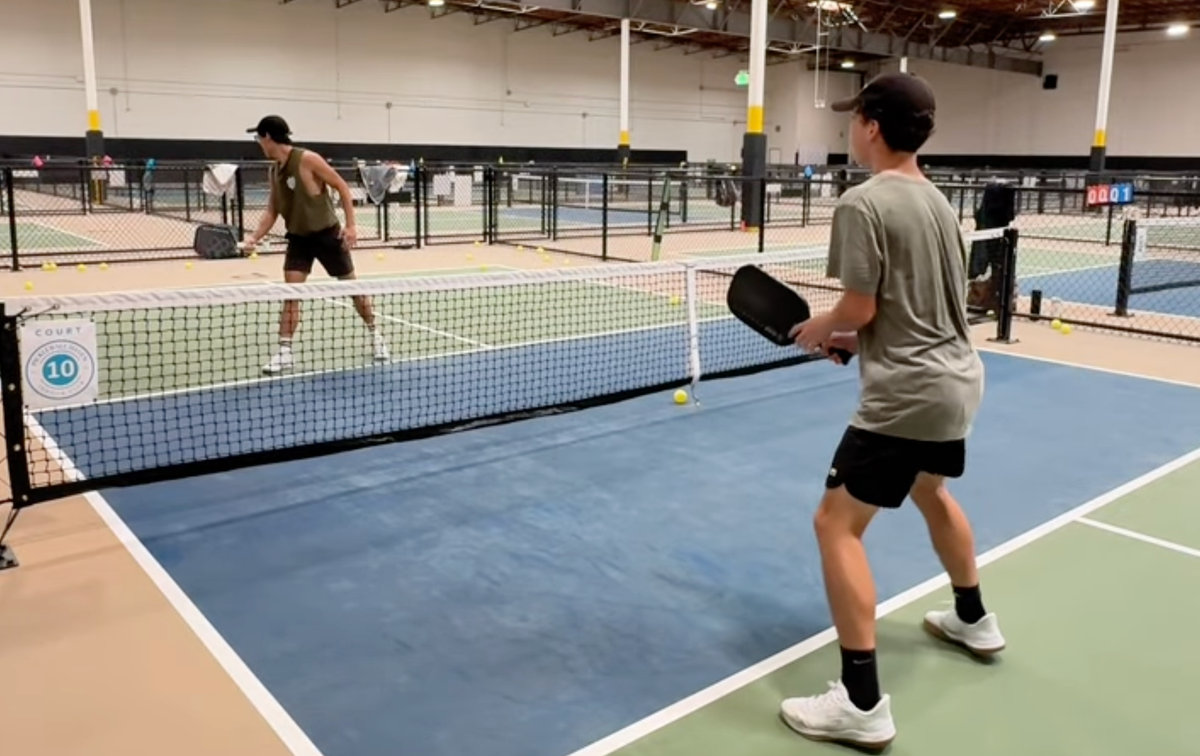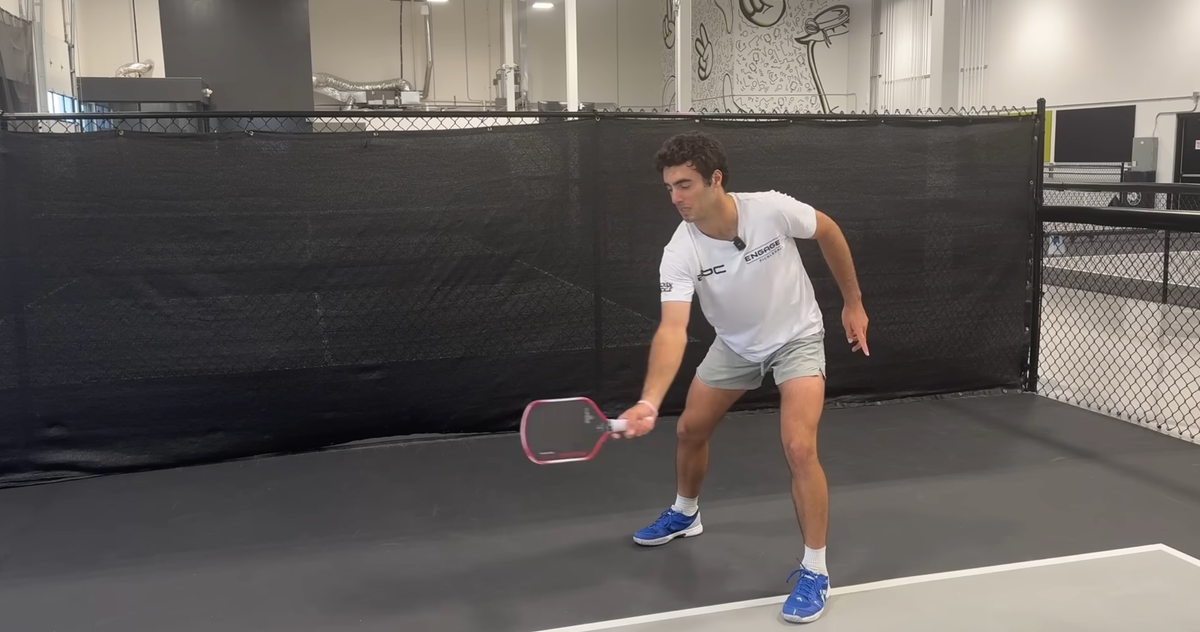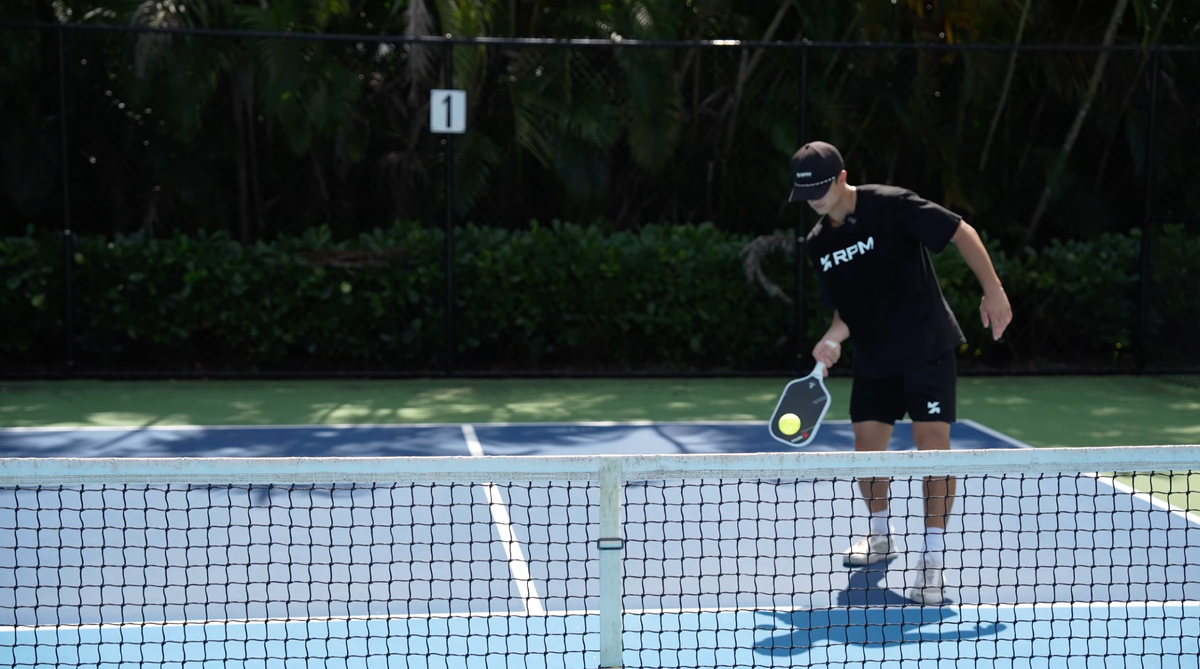
Hey guys, it’s Kyle from ThatPickleballGuy. This is the Erne, and I’m going to show you exactly how you can do it in recreational play and tournaments. So, when you’re on the court, your friends will be like, “Wow, that was sick!” and you’ll think the same. Let’s go!
One of the key things in pickleball is to be a threat on the court. You want to take away options from your opponent so they can’t place the ball in as many spots. The ability to execute an Erne takes away options from them.
We’re going to demonstrate different reads with the Erne. But first, let’s define what an Erne is. An Erne is when you run around, jump through, or over the kitchen to get closer to the net (Figure 1), allowing you to either put the ball away or gain an advantage in the point. The goal is to get closer to the net without violating the kitchen rules. As long as you land outside the sideline, it’s legal. You can’t jump with your foot on the kitchen line, and you can’t land with your foot on the sideline—those are illegal. But as long as you jump outside the kitchen and land outside the sideline, you’re good.

Key Rules of the Erne
Here’s one rule you need to keep in mind, which often confuses players: Can you cross the plane of the net? The ruling is this: If I make contact with the ball on my side of the net, I’m allowed to cross the net with my paddle or body on the follow-through. However, I cannot make contact with the ball on the opponent’s side of the net—that’s illegal. Additionally, if I swing and hit the net, it’s a violation, and I lose the point. So, you can cross the net, but your paddle cannot touch it, and you must get back to your side of the court.
Three Main Reads for Executing an Erne
- Head Down Back Foot Erne
The key here is not where the ball is coming from but your opponents position. If your opponent receives a down-the-line shot and is caught on his back foot with his head down (Figure 2), that’s a trigger for me to execute an Erne. Why? If they’re on their back foot, they’re off balance, and the next shot is likely to be more lofty. When their head is down, they also loses peripheral vision, which gives me the opportunity to move in for the Erne.

When I prep for this, I ensure my footwork is ready. If I’m too far away from the sideline, I won’t be able to jump the kitchen, so I get closer to the sideline. There are two types of footwork:
- Level 1 Footwork: I run around the kitchen by stepping off my left foot, landing on my right foot, planting perpendicular to the sideline, and hitting the ball.
- Level 2 Footwork: I jump through the kitchen. As long as I jump from behind the kitchen line and land outside the sideline, I’m legal. I jump off my left foot and act like Superman for a second, landing outside the sideline.
- Split Line Erne
The split line Erne is less commonly taught but is incredibly effective if you have the athleticism for it. Here’s the trigger: When the opponent to your right crosses in front of the line, their most common dink will come to your corner (Figure 3).

When I see the opponent cross the line, I immediately consider an Erne opportunity. While it’s not always guaranteed, I use this moment to jump through the kitchen and gain an advantage by being closer to the net, where I can apply pressure.
- Baseline Drop Erne
In this scenario, I’m focused on if their third shot comes into my zone (What’s a third shot?). If it does, I execute an Erne. This tactic pressures my opponent and limits their drop options, making them more predictable and easier to anticipate.
If my opponents are in the backcourt and I see one of them cross the split line while moving toward the net, I immediately start looking for an Erne opportunity (Figure 4).

Pro Tip: Timing Your Erne
Here’s the biggest mistake I made when first learning the Erne: I moved too soon. If you go too early, your opponent will notice, and they’ll be able to place the ball where you can’t reach it. The trick is to wait until your opponent makes contact with the ball before you make your move. This ensures you have the element of surprise and can execute the Erne effectively.
To Wrap Things Up
That’s how you perform the Erne with three different reads. Go try it on the court! If you want to learn about the six doubles strategies every beginner must know, check out the next article.
Think you know pickleball inside and out? Challenge yourself with ThatPickleball IQ Test and see if you can score a perfect 10 out of 10!
See you guys next time 👊🏻
Anuncie Aqui / Advertise Here
Sua marca para o mundo Pickleball! / Your brand for the Pickleball world!

 English
English  Spanish
Spanish  Portuguese
Portuguese  German
German  Italian
Italian  Japanese
Japanese  French
French  Polish
Polish  Russian
Russian  Netherlands
Netherlands  Hungarian
Hungarian  Turkish
Turkish  Videos
Videos  Pickleball Portal
Pickleball Portal









 English (US) ·
English (US) ·  Portuguese (BR) ·
Portuguese (BR) ·